Sinigang na Salmon Belly sa Kamias with flavorful fish and vegetables in a sour soup is the perfect cold weather comfort food. Delicious served with steamed rice or enjoyed on its own!
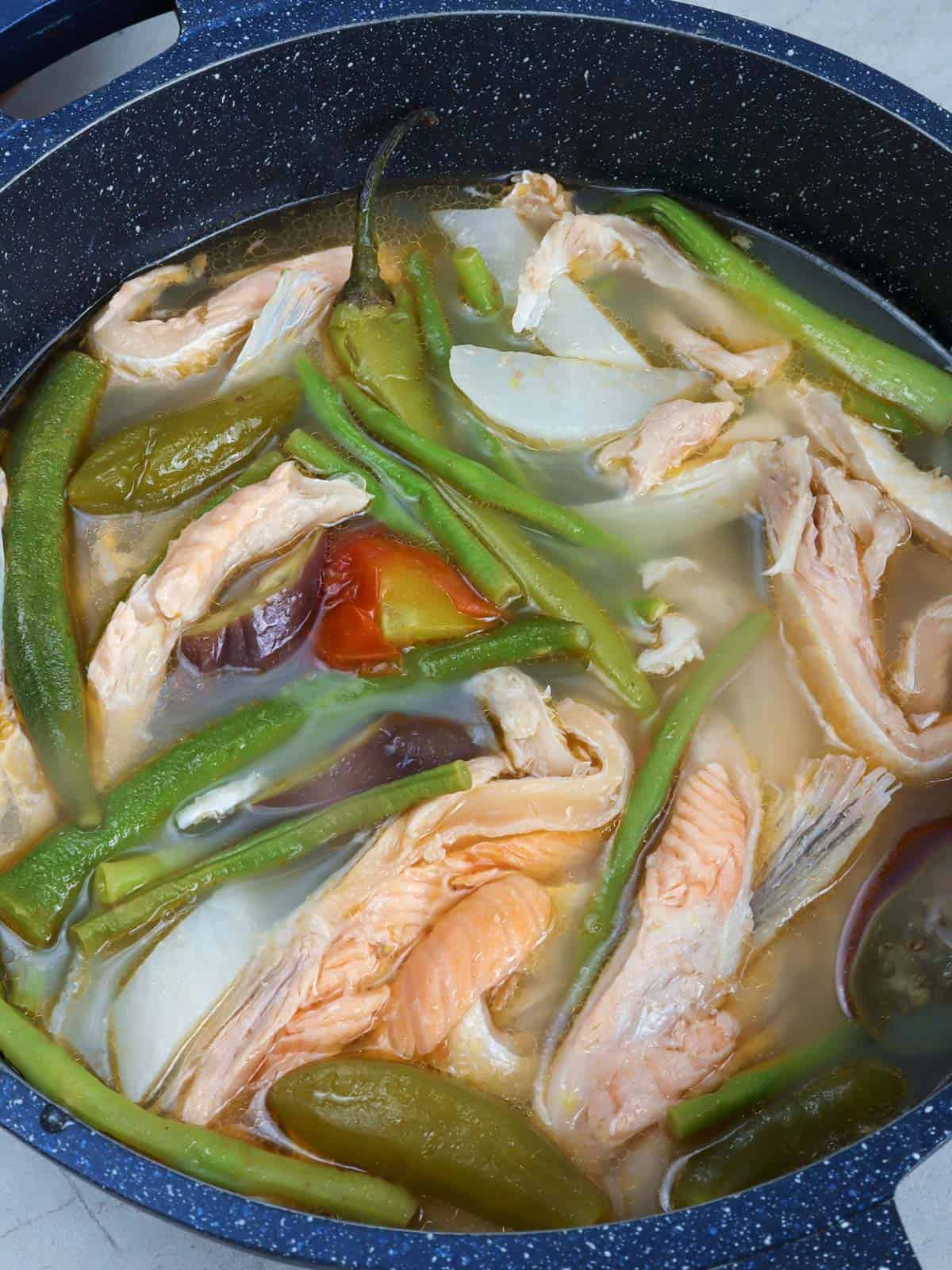
You'll find quite a few sinigang recipes on the blog, but although they're all delicious, I have to say sinigang na salmon belly sa kamias is the best of the lot! I can never refuse a piping hot bowl of sinigang in any form, but this salmon version is what I often cook at home.
It's quicker to cook and healthier to boot! If you're looking for a great alternative to beef or pork in your next pot of sour soup, this fish is a good source of high-quality protein and heart-healthy omega-3 fatty acids.
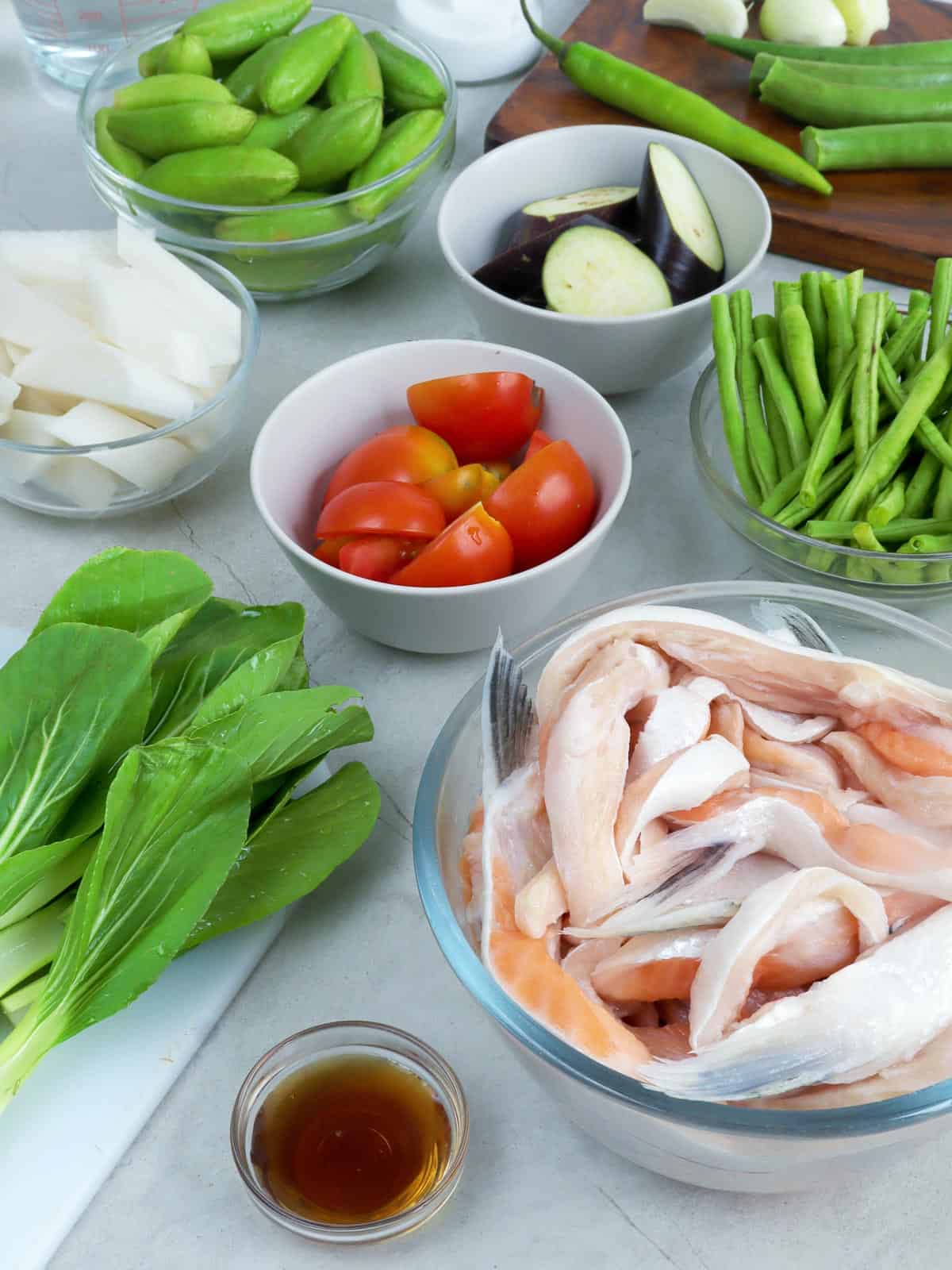
What you'll need
- Kamias is one of the souring agents commonly used in sinigang and provides a refreshing change from the ubiquitous tamarind pods.
- Vegetables in this recipe are what I like to add to my sinigang but feel free to swap with pechay, kangkong, spinach, or whatever variety you have on hand.
- Salmon belly- its melt-in-your-mouth tenderness and flavor from the thick ribbon of fat take our classic Filipino sour soup to a new level of yum. Salmon head is also a great cut to use.
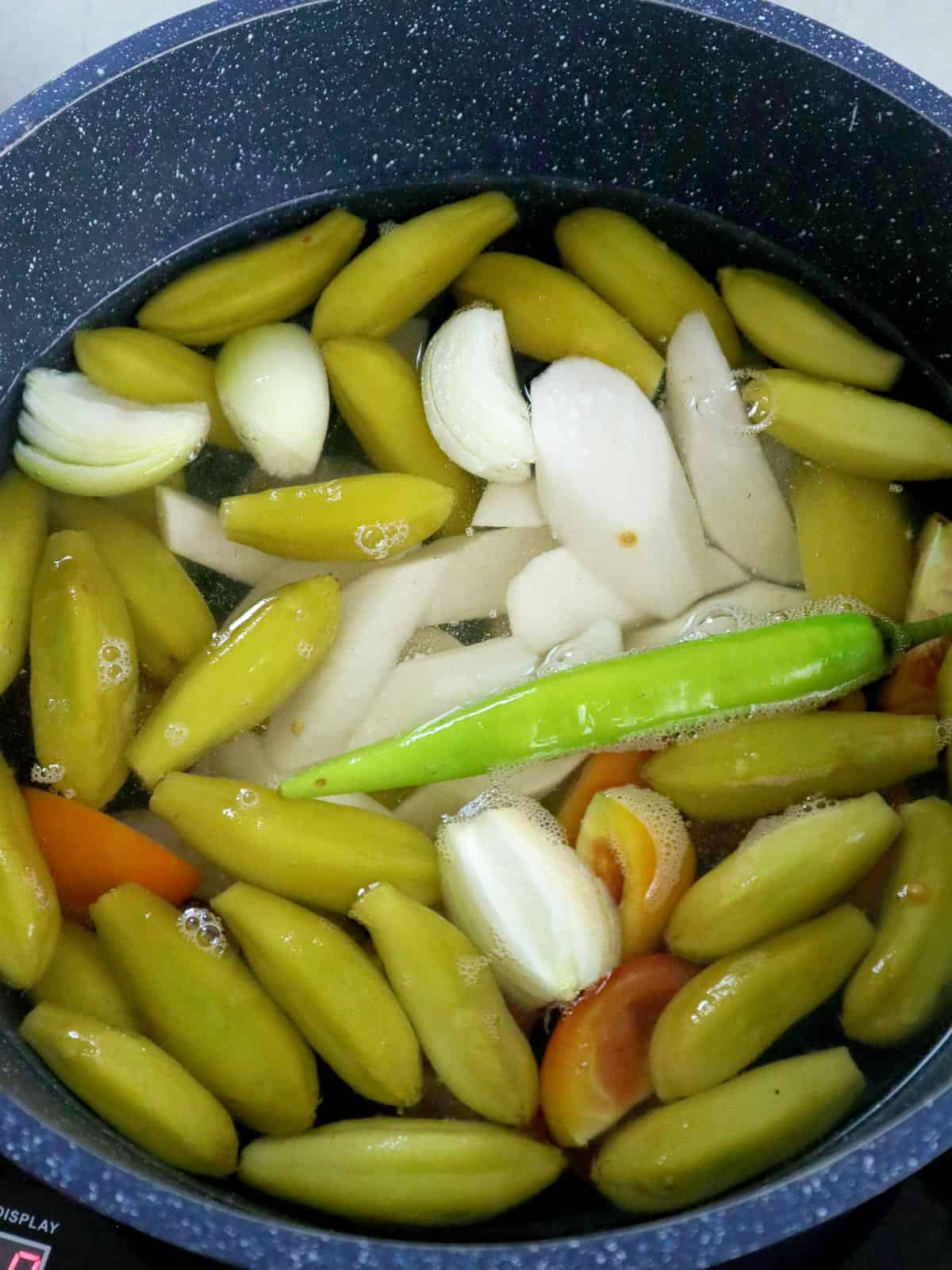
Cook's tip
This soup is super quick and easy to make. To ensure the fish doesn't get overcooked and fall apart in the soup, cook first the kamias to draw out the most flavor and the vegetables until tender-crisp before adding the bellies.
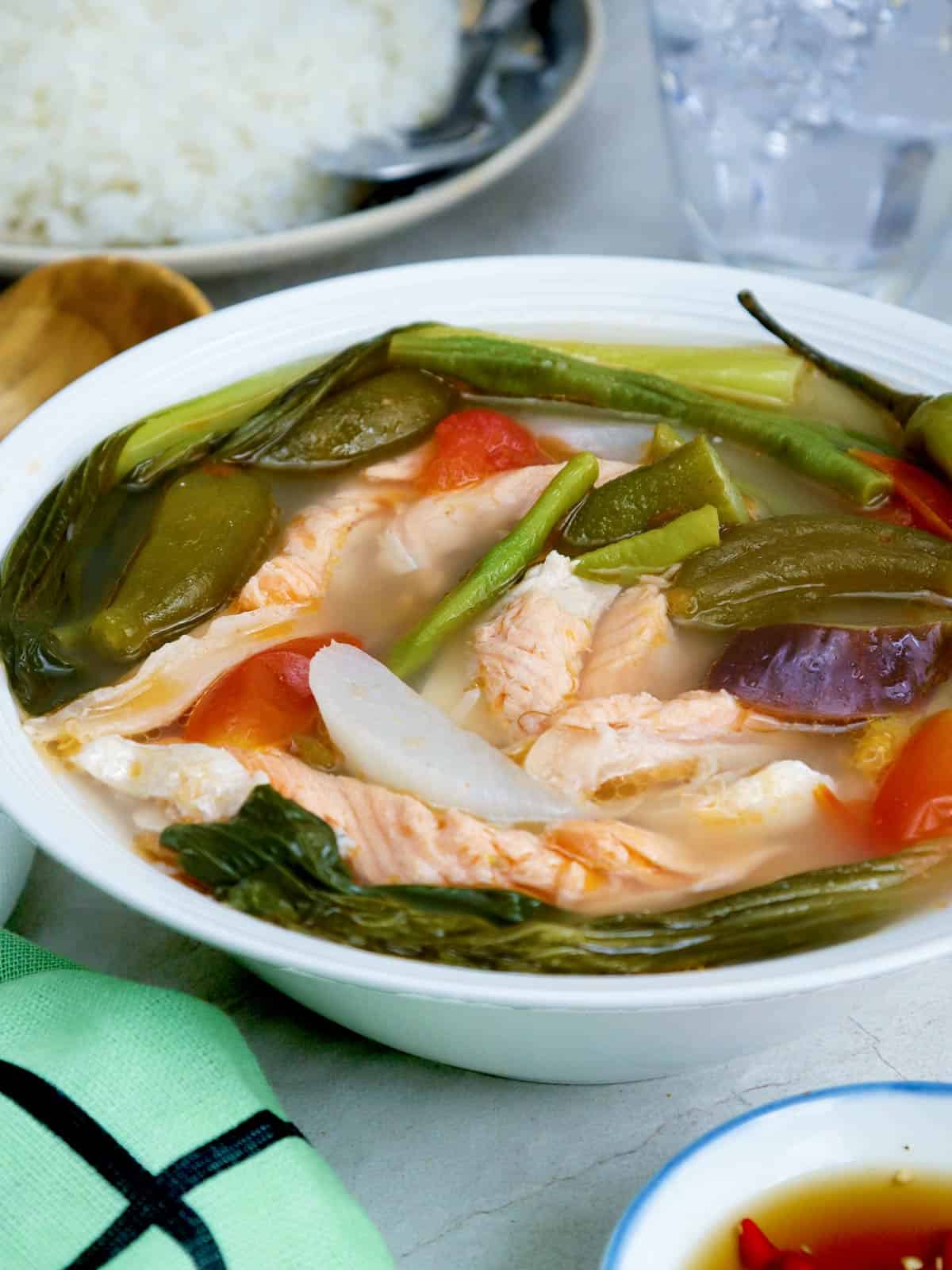
How to serve and store
- Serve the soup as a main dish for lunch or dinner with steamed rice. Enjoy it with patis and sili as a dipping sauce for the best experience!
- Transfer leftovers to an airtight container and refrigerate for up to 3 days or freeze for up to 2 months.
- Thaw completely and reheat in the microwave or stovetop until completely heated through.
More delicious salmon recipes
Ingredients
- 6 cups water
- 1 tablespoon fish sauce
- 2 cups kamias
- 1 small onion, peeled and quartered
- 2 medium tomatoes, quartered
- 1 banana chili
- 1 cup labanos (radish), peeled and cut into chunks
- 1 cup long beans, ends trimmed and cut into 3-inch lengths
- 1 pound salmon belly, scaled and cut into pieces
- 1 eggplant, stemmed and cut into chunks
- 4 pieces okra, ends trimmed
- salt to taste
- 1 bunch bok choy
Instructions
- In a large pot over medium heat, bring water to a boil. Add fish sauce.
- Add kamias, onions, tomatoes, and chili pepper. Cook for about 1 to 2 minutes.
- Add radish and cook for about 1 to 2 minutes.
- Add long beans, eggplant, and okra and continue to cook for 2 to 3 minutes.
- Add bok choy and cook for another 1 to 2 minutes.
- Add salmon and continue to cook for about 7 to 10 minutes or until fish changes color and flakes easily and vegetables are tender yet crisp.
- Season with salt to taste. Serve hot.
Notes
Nutrition Information
“This website provides approximate nutrition information for convenience and as a courtesy only. Nutrition data is gathered primarily from the USDA Food Composition Database, whenever available, or otherwise other online calculators.”

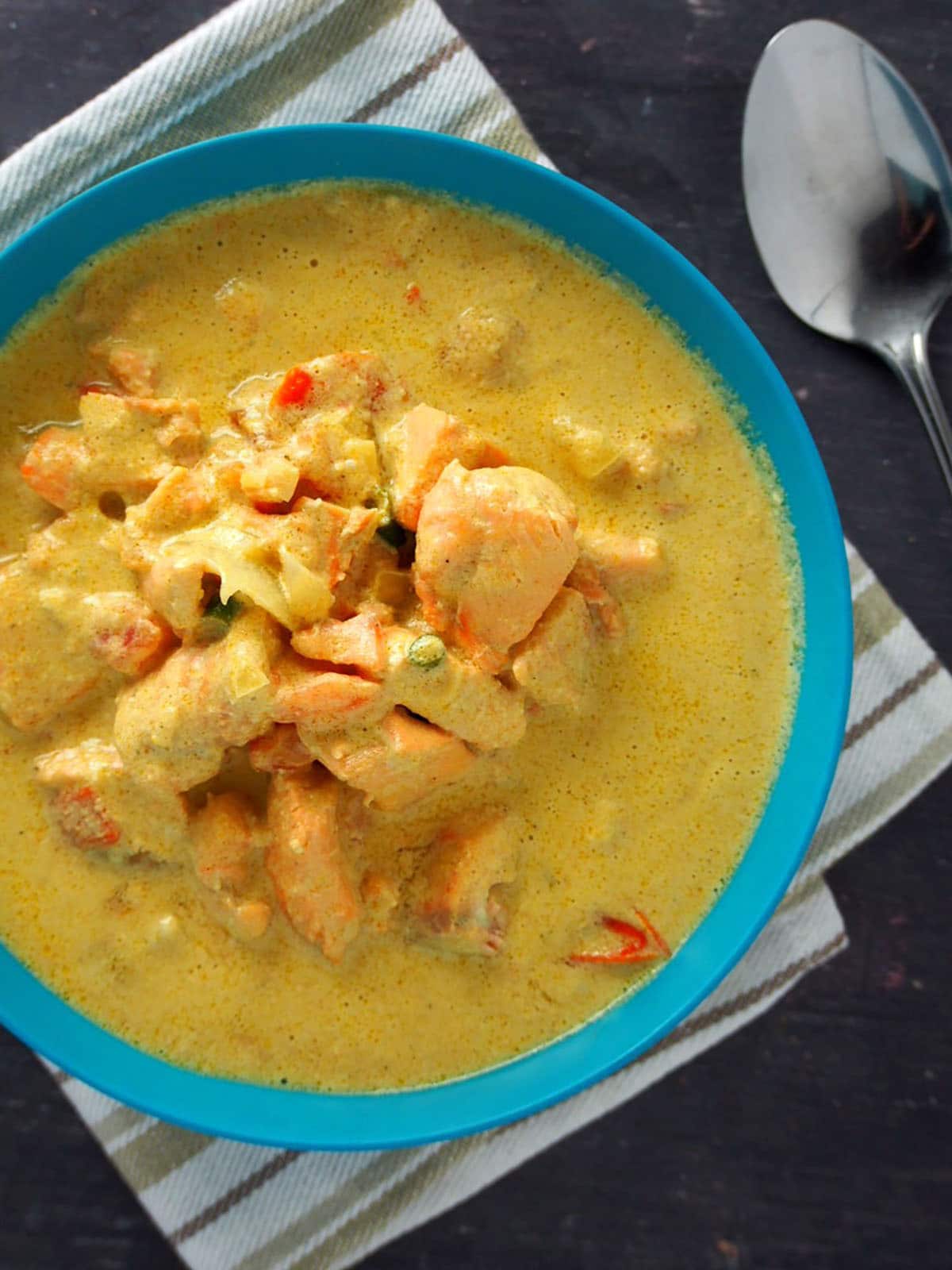
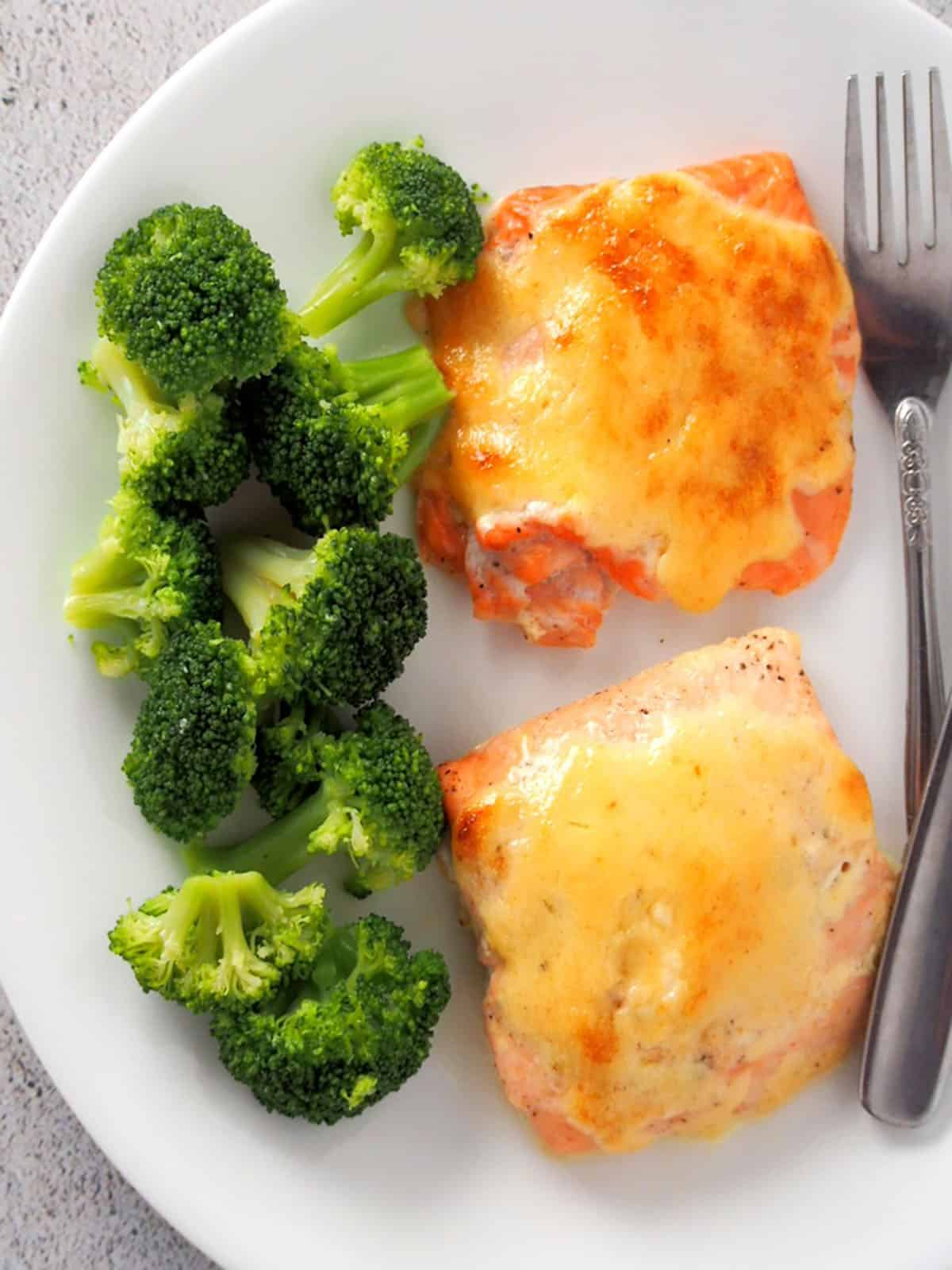
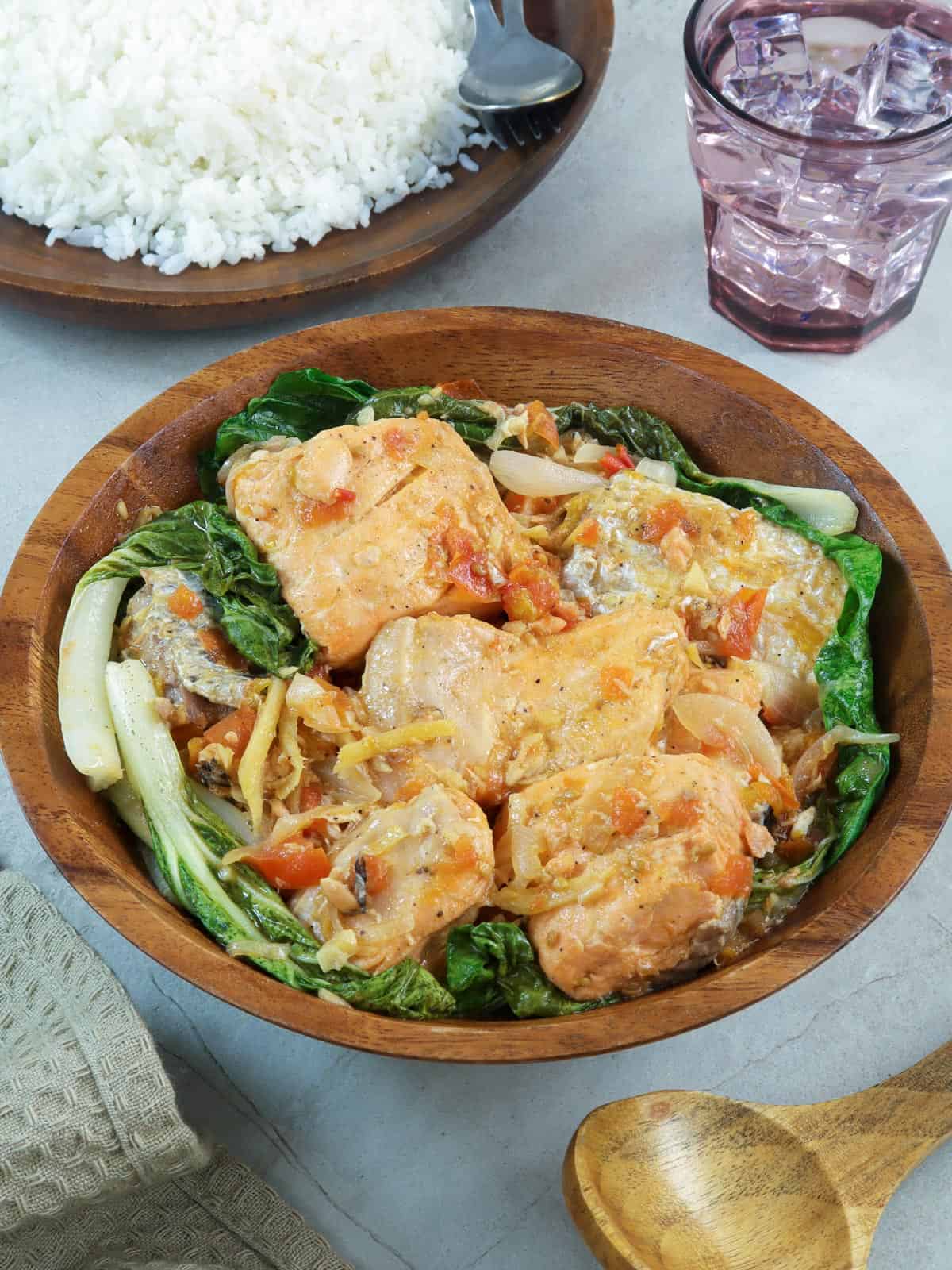
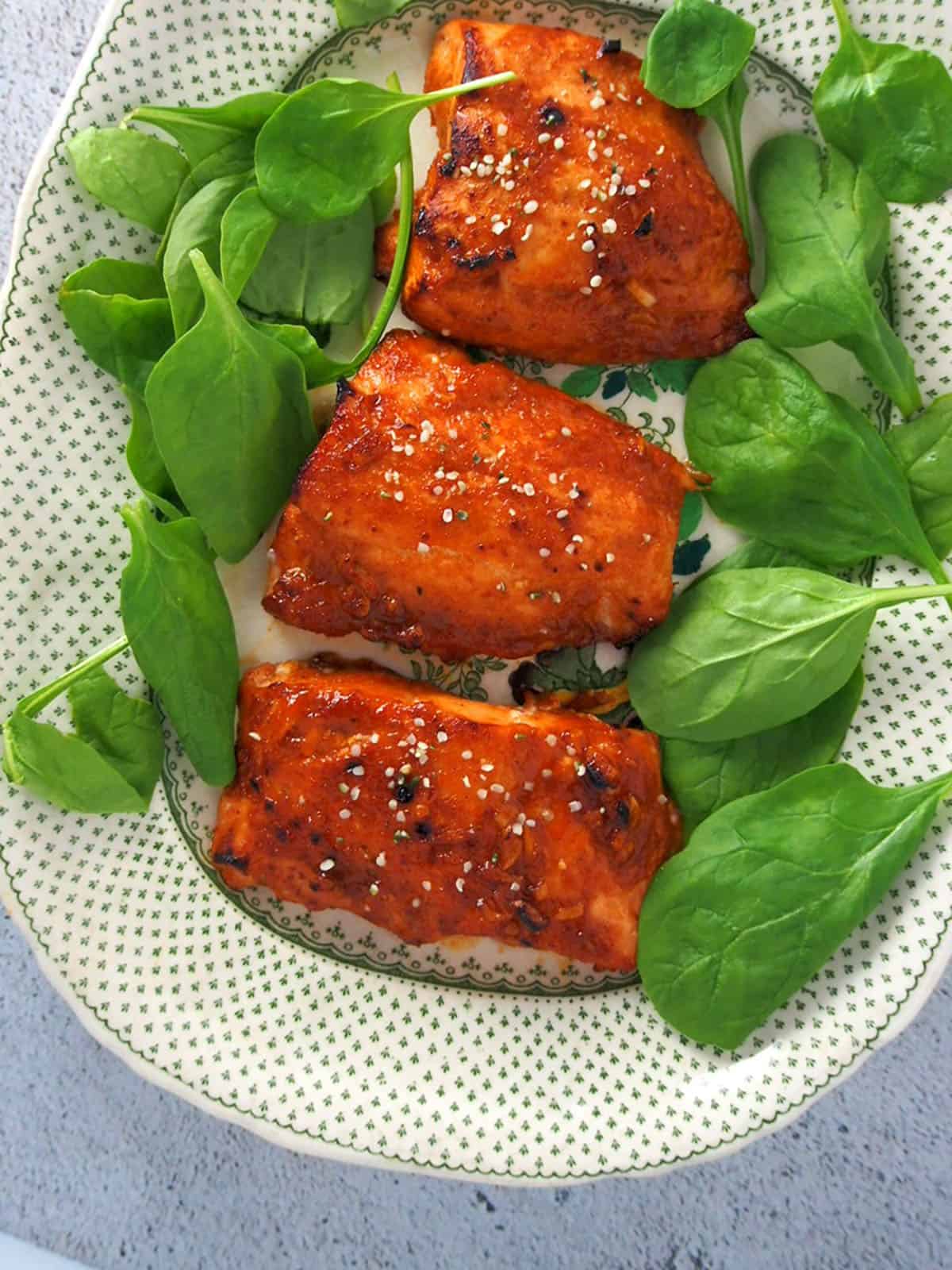
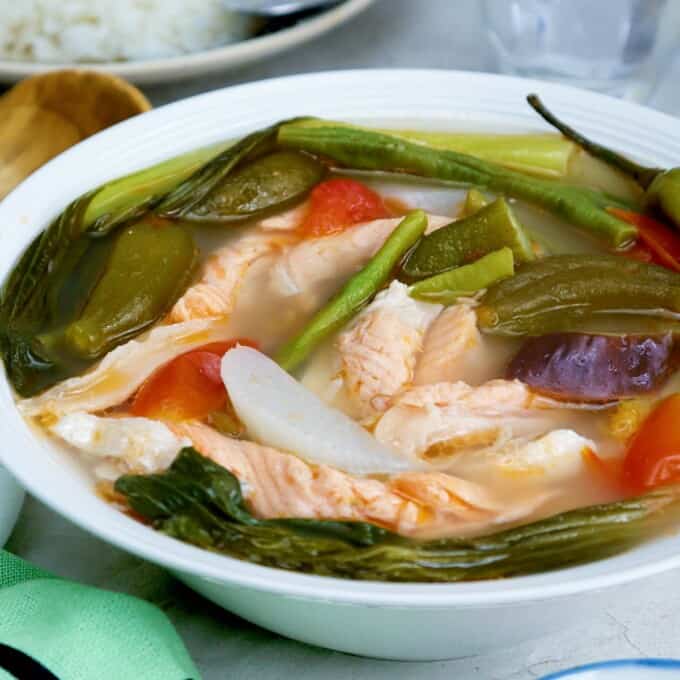
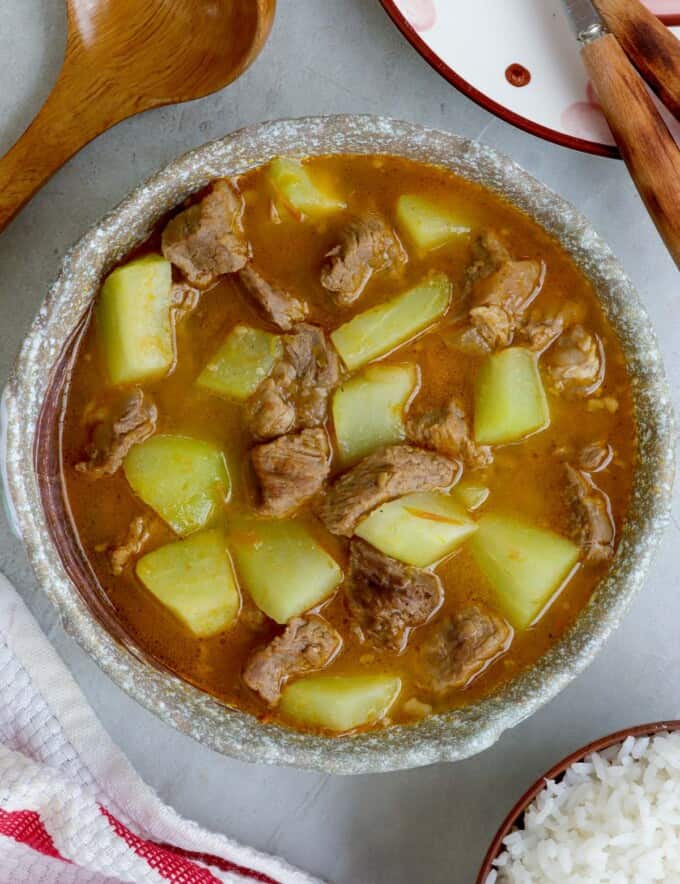
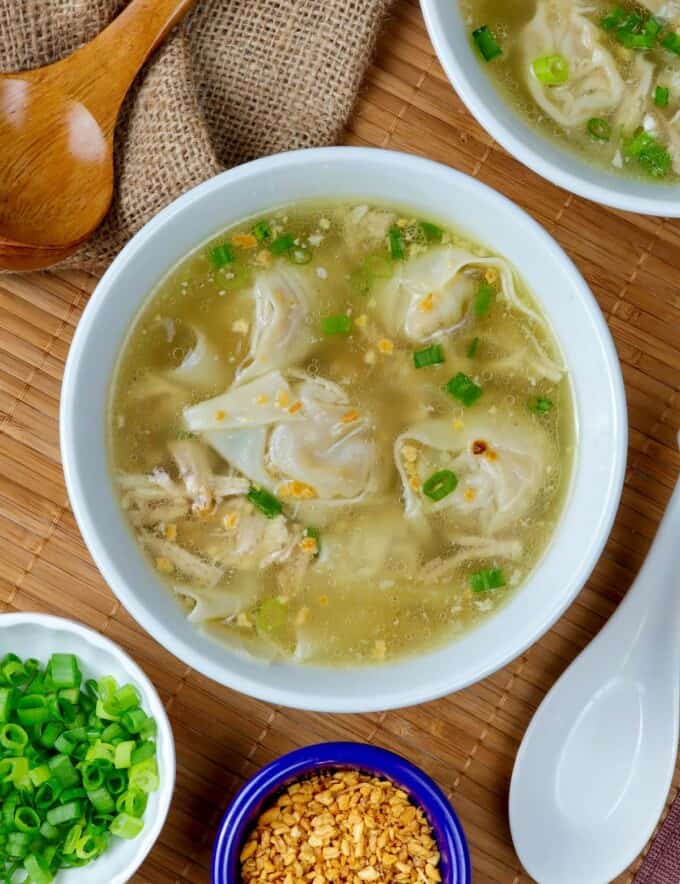
Ella says
made this today! yum!!
Jo Del says
Can I add ginger to this recipe?
Also, can I use tamarind instead of kamias?
Celeste says
There's a typo on #3, second line, which is what you wrote on #6. 🙂
Lalaine says
Thank you so much, Celeste, for bringing it to my attention. Corrected the recipe 🙂
Connie says
Want to know how the veggies retain its green color after the sour mix has been added. Every time I cook sinigang, the veggies turned yellow .Any suggestion?
Lalaine says
Hi Connie
Try not to overcook the vegetables. Usually, it just takes 1 to 2 minutes for the greens to cook. After you add the green leaves in, turn off the heat, cover and allow the remaining steam to cook the vegetables through. Hope this helps.
Docjime says
If you cover the pot when you cook the veggies it will become darker and will not retain its green color. Put the veggies at the end while its boiling then turn off the heat and do not put the cover:)
Lalaine says
Thanks for the tip:)
Jocelyn Maluping says
To retain the color of the veggies, I usually steam or blanch them in water prior to adding them on the dish. I don't normally cook them in the soursop mixture as it will make it look overcooked. Not appealing anymore. 😊